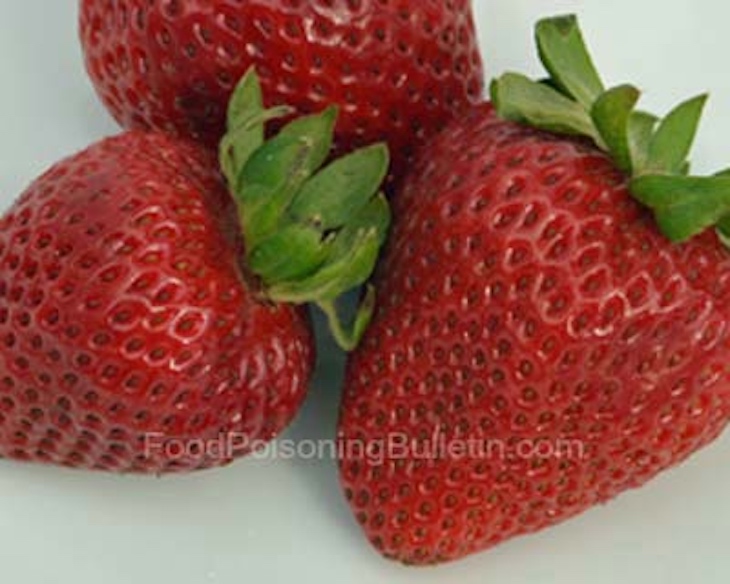How are strawberries contaminated with hepatitis A? There is a hepatitis A outbreak in the United States that is linked to organic strawberries that were imported from Baja California in Mexico. The case count by state is: California (15), Minnesota (1), and North Dakota (1).

Because there have been so many outbreaks linked to berries, the FDA implemented a sampling program for domestic and imported frozen berries in 2018. Two hepatitis A outbreaks linked to frozen strawberries sickened more than 300 people in the United States in 2013 and 2016.
The food supply is global, so many produce items, which are usually eaten uncooked, can be contaminated with pathogens like hepatitis A because the infrastructure in other countries may be not as robust as in the U.S. The CDC says that the foods that are most likely to be contaminated with this virus are fruits, vegetables, and shellfish.
How Are Strawberries Contaminated with Hepatitis A?
All fresh produce can be contaminated with pathogens. Hepatitis A is most often transmitted when a sick person handles food that is then eaten by someone else. Unfortunately, a person who is infected with this virus is infectious for two weeks before they even know they are sick.
Fresh fruits are handled extensively all along the supply chain. One risk factor for contamination is workers who remove the stems from the berries in the fields, according to a paper published by the CDC.
Contaminated water is another vehicle for transmission. In many developing countries, the virus is found in water that is contaminated with raw sewage.
And because these products are most often eaten uncooked, that is, without a kill step, people get sick when they eat the fruit.
Berry Hepatitis A Outbreaks
There have been several hepatitis A outbreaks linked to berries over the years. These outbreaks were linked to both fresh and frozen berries.
In 2013, a hepatitis A outbreak linked to Townsend Farms Organic Antioxidant Blend frozen mixed berries sickened at least 165 people in 10 states. The source of the contamination was pomegranate seeds that were imported from Turkey. Seventy-one people were hospitalized.
In 2016, a hepatitis A outbreak linked to strawberries imported from Egypt that were used in smoothies sold at Tropical Smoothie Cafe venues in the eastern United Scats sickens at least 143 people. Fifty-six people were hospitalized. The frozen berries were also sold to schools and institutions across the country. Some of the cases were secondary transmissions.
In 2020, a hepatitis A outbreak was linked to Fresh Market blackberries. At least 20 people in 7 states were sickened and 11 were hospitalized.
In the current outbreak, at least 17 people in three states are sick. Twelve people have been hospitalized. The FDA has identified FreshKampo and HEB brands as the berries that sick people ate.
What You Can Do
Unfortunately there is no way to completely remove hepatitis A from strawberries without cooking them. The virus is not destroyed by freezing. Cooking will destroy it; food must be held at 185°F for one minute.
Rinsing the berries can remove some of the virus. Produce washes will not destroy all of the hepatitis A or other pathogens on produce; neither will vinegar or lemon juice. Vinegar and lemon juice, which are acidic, can reduce the viral load but won’t remove all of it. Chlorine and bleach will destroy the virus, but those products should not be used on food.
So, as always, stay up to date on food recall announcements and outbreak investigations. Rinse your produce before you eat it or prepare it to reduce pathogens. And if you do get sick with the symptoms of hepatitis A or diarrhea or vomiting, see your doctor.

If you have been sickened with a hepatitis A infection after eating FreshKampo or HEB organic strawberries, please contact our experienced attorneys at 1-888-377-8900 or text us at 612-261-0856. Our firm represents clients in lawsuits against grocery stores and food processors.
.




